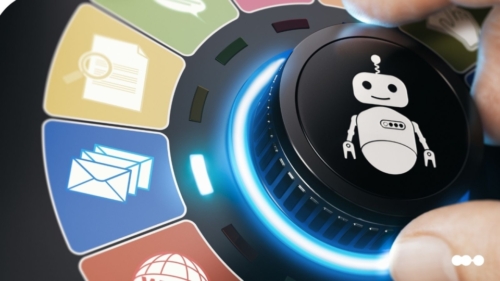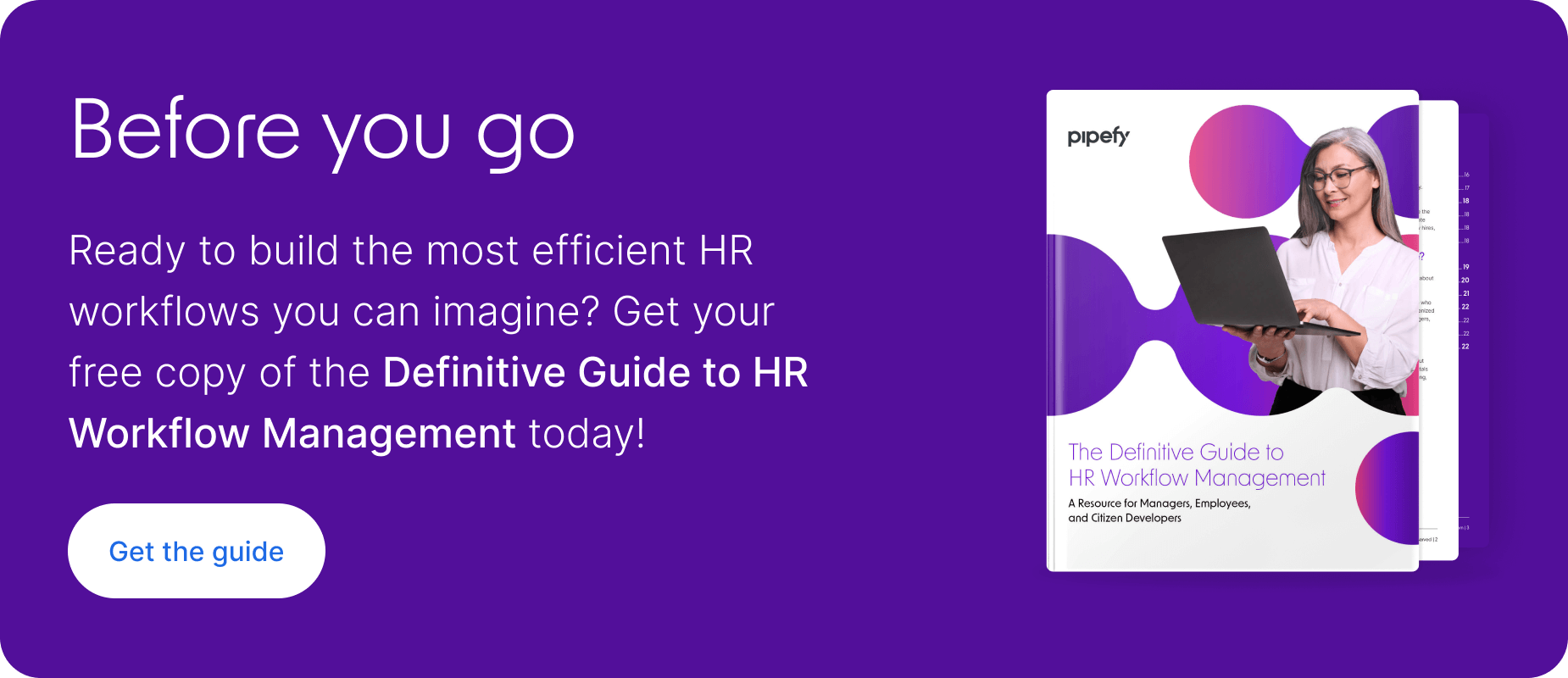
As artificial intelligence (AI) advances continue, an ever-growing number of workplaces are adopting them as enhancements to their existing process management systems. The human resources (HR) sector is no different. HR analysts often seek new ways to better serve their workforce while maintaining a reasonable workload and conserving IT resources. The answer many have discovered is the AI-powered chatbot.
What is an HR chatbot?
Chatbots operate in an instant messenger environment in which the entity on the service side is not a human. The answers we receive come from software programmed to chat conversationally and answer questions using a set of pre-entered information.
Recent AI developments have exponentially enhanced chatbot capabilities. Natural language understanding (NLU) is a tool that grants chatbots the ability to analyze text for deeper meaning. Machine learning allows them to continually update their knowledge of the topics we ask about, and alter their responses accordingly – they make recommendations based on the factual data they analyze.
Company employees are the customers in the HR realm; chatbots deliver HR information and documents to employees and perform processes for HR analysts. Employees get fast, accurate answers to questions, while HR analysts leverage the automation component that many chatbots include to eliminate manual, repetitive tasks and increase efficiency for the HR team and employees alike.
The role of HR chatbots in the workplace
The term that best conveys the role of HR chatbots in the workplace is virtual assistant. Once implemented, HR chatbots assume vital duties in the work of HR analysts, affecting almost everything they do. Below you’ll find a few ways chatbots transform work for HR professionals and company employees.
Recruitment
Few business processes are as high-stakes as recruiting and hiring new employees. The right people set the course for a business’s success and employees’ fulfillment for years to come. Getting it wrong can invite unnecessary conflicts and missed goals. Compounding that pressure for HR analysts is the reality that they may receive hundreds of resumes for just one open position.
Chatbots allow HR analysts to digitize and automate recruitment from end to end. Their AI analytics components first perform the arduous task of filtering through resumes to find the most qualified candidates for open positions by focusing on set data points like candidate salary expectations, availability, specific software knowledge, or the titles of positions they previously held. When candidates have been selected, AI chatbots use automation to schedule interviews using knowledge of individual HR team members’ calendars.
Managers who need status updates on individual candidates in the recruitment process can rely on HR chatbots to instantly provide them. Chatbots save hours of HR team labor each week by decreasing the need for constant manual spreadsheet updates, email alerts, and jumping back and forth between apps.
Onboarding
A 2023 study revealed that 52% of new hires don’t feel prepared to begin work after their onboarding concludes. This means many newly-onboarded employees feel two steps behind before they start working. It’s an unfortunate and easily avoidable situation. By performing the following functions, HR chatbots relieve your HR team and new hires of the time-consuming, repetitive side of onboarding:
- Issuing legal documents and tax forms via automated emails,
- Integrating with most HR apps like DocuSign, allowing all paperwork to be returned instantly,
- Automatically circulating paperwork for approvals across business lines,
- Alerting IT staff to issue and set up equipment, and
- Answering all new hire questions thoroughly and promptly.
When the paperwork is already taken care of, the valuable onboarding time HR analysts have with new hires can be spent establishing strong relationships by giving them more one-on-one attention. Give them as many opportunities as possible to experience the company culture first-hand and get thorough, effective training. Businesses that set up new hires for success are far more likely to both retain them and see them make lasting contributions.
Insights
The best HR professionals continually seek ways to boost employees’ experiences and mitigate concerns, but uncovering them can be a challenge. Surveys and pulse checks work well and get lots of responses when generated by a chatbot. They provide a quick, casual, anonymous environment for employees to convey concerns.
Employees can also submit requests and complaints directly into the chatbot, which converts the information into quantifiable, structured data. HR analysts can use this data to measure just about anything HR-related. This includes but is not limited to
- Benefits usage,
- Employee/team performance,
- Onboarding completion and success,
- Workplace diversity,
- Attrition rates and reasons, and
- Employee satisfaction.
All businesses periodically re-evaluate their processes. Programs become outdated, after all, and employee preferences shift over time. Chatbot technology transforms these eras of change into opportunities to pivot strategies, replace unused benefits, and cut costs.
Driving and enhancing the employee experience
Businesses looking to retain great employees must provide, at minimum, good service desk experiences. Employees have issues that need prompt, thorough solutions; long wait times and lackluster HR responses convey a message directly from the business that they don’t matter. Chatbots provide employees with
Centralized help. HR chatbots provide employees with one centralized place to seek help and make requests. This eliminates the guesswork of deciding to whom, exactly, they should send questions and issues.
Conversational tool integration. The best chatbot technology integrates with conversational tools like Slack and Teams; employees can submit requests without leaving their online business environment.
Rapid approvals. Whether employees are seeking reimbursement for travel expenses or a day off for an emergency, HR chatbots cut out the email “middle man,” evaluate their requirements, and, if necessary, deliver their request to the first available approver.
In the meantime, as chatbots get quick answers to employees who have frequently asked questions, HR analysts gain valuable time in which they can find solutions for larger, nuanced issues that affect every employee.
HR chatbot benefits
Think of all the questions you’d ask your employer’s HR team if you had an entire afternoon to chat with them. When employees are given access to HR chatbot technology, this opportunity comes to life! The convenience alone makes it a must-have for most large companies. Other benefits include:
Faster response times
Whether your employees are experiencing major life changes or just have a simple yes-or-no question, they deserve prompt attention. However, large workloads and full meeting schedules prevent this from becoming a reality for many HR teams.
A self-service virtual assistant chatbot is the most practical solution for both types of needs. They simply tell the chatbot their needs, and receive their answers instantly. If the chatbot cannot provide a specific answer to a nuanced question, it can escalate it to the next service provider or level.
Cost optimization
According to McKinsey’s Global AI Survey, 27% of HR respondents reported at least a 10% decrease in costs after adopting AI capabilities in different department processes such as performance management, organization structure, workforce allocation, and talent management optimization. 23% of respondents noted an average revenue increase between 6% and 10%.
Chatbots are just one of many possible applications of generative AI to HR tasks and processes that can impact not only the team’s financial health but also play a key role in helping businesses reduce operational costs.
Higher productivity
HR teams see marked productivity gains after virtual assistant chatbots are implemented. As the chatbot finds answers for employees, tickets in the work queue are quickly labeled as resolved with far less, intervention from a human; this, of course, leads to a productivity surge.
Newly freed from the manual task of answering frequently asked questions, HR analysts can spend this new-found block of time researching trends in employee benefits, tracking measured metrics like turnover and attrition rates, and spending more time in interviews with potential candidates to find the best possible workforce. These activities address underlying HR issues and bring increased value to the organization as a whole.
Improved visibility
Employees and stakeholders often need to the specific process phase in which their request resides. Chatbots can help! Users can ask the chatbot to show their request status based on time and assignee, and quickly receive a look at its most recent activity. This isn’t just a convenience; it creates a culture of accountability in which everyone strives for excellence and timeliness.
Streamlined processes
Within a business process automation (BPA) platform, AI chatbots become even more powerful. In a no-code setting, they can help HR analysts and managers not only automate parts of their current processes, but also design new processes as a whole or improve existing ones in seconds without overloading the IT department.
HR chatbot challenges
No technology developed as recently as that of AI-powered chatbots is without challenges, and those challenges are not specific to HR chatbots. Concerning the challenges listed below, there is good news… AI-powered chatbots are quickly evolving with them in mind, fueled by the recent surging interest in and applications of the software.
Quality of data infrastructure
The database of knowledge that fuels AI-powered tools is called data infrastructure. If the data infrastructure is not set up as a robust source of knowledge, its output will be incomplete or inaccurate, essentially rendering it useless.
A closely related challenge is that of AI’s tendency to guess when it does not have the answer to a question. Rather than reply, “I don’t know,” AI can be programmed to filter through the information it does have to guess an answer. In some instances, it may not inform the user that it is guessing.
Hence the particular importance of establishing a full, accurate knowledge infrastructure from the time of first use; employees and customers who repeatedly witness a tool’s unreliability soon learn not to trust its results and won’t resume using it even after issues have been resolved.
Too many chatbots
When multiple departments in an organization deploy different chatbots for internal use, issues can arise. Employees and customers who question the wrong chatbot can get inaccurate answers.
If an enterprise resource planning (ERP) system were to malfunction, for example, it could be unclear as to which chatbot should be consulted – procurement or IT. If the wrong department is chosen, that chatbot can’t fix the issue, correct the user, or direct them to the correct channel. While none of these are catastrophic, they can cause unnecessary delays for the entire organization’s staff.
Businesses that employ more than two chatbots for internal service requests should consider consolidating them into a single service. When that is not an option, it’s important to provide detailed training and supplemental instructions for employees to clarify the right chatbot for each issue.
Security
Your business will probably obtain its HR chatbot technology from another, meaning an additional company will have access to your employees’ personal information. Before selecting a chatbot tool, it is crucial to ensure that the provider is compliant with industry-standard security practices like SOC 2.
Chatbots can be vulnerable to identity theft, ransomware, malware, and data alterations. Hackers have been known to use them as backdoors to gain access to the personal information of employees and customers. This is less dire than it sounds, however – the solution in these cases is to vet chatbot providers for those that hire or staff security experts to periodically test it for vulnerabilities.
Streamline HR service delivery with chatbots
When a business’ HR team is overloaded with work, its employees still deserve prompt, thorough HR help. Pipefy’s AI chatbot integrates people, business lines, and data in cohesive connections for efficiency, improved performance, and stellar employee experiences, including those of individuals within the recruitment process.
Pipefy AI will become your HR manager’s new best friend, swiftly converting your inputs into comprehensive processes, and simultaneously offering accurate and crucial insights for informed strategic choices, all on a highly secure platform.






